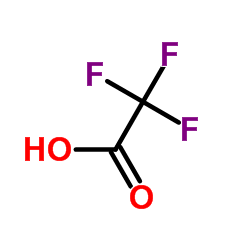| Structure | Name/CAS No. | Articles |
|---|---|---|
 |
Acetonitrile
CAS:75-05-8 |
|
 |
Methanol
CAS:67-56-1 |
|
 |
trifluoroacetic acid
CAS:76-05-1 |
|
 |
Undecane
CAS:1120-21-4 |
|
 |
ethyl heptafluorobutyrate
CAS:356-27-4 |
|
 |
DIEA
CAS:7087-68-5 |
|
 |
2,2,2-Trifluoroacetamide
CAS:354-38-1 |